This guest post by Nia McRae appears as part of our theme week on Children’s Television.
Usually, urban life in movies and television is depicted in a bleak way. Growing up, I found myself confused by why the “norma” high school experience always took place in sunny suburbia. Often times, when school life in urban areas were depicted, it was… well, this:
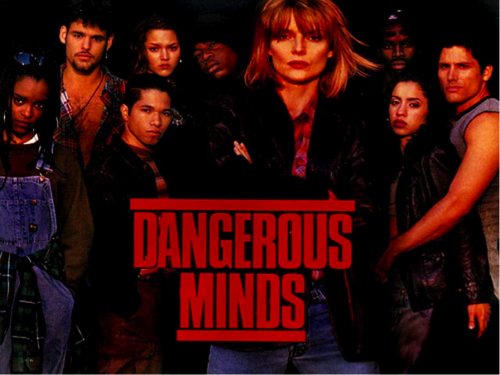
Suffice it to say, it wasn’t an experience that I could relate to. The only depictions of city life that somewhat reflected my experience was the original movie, Fame (1980) and the cartoon, Hey Arnold! (1996). It may sound strange to call a cartoon relatable but HA! was unique in that way. It pushed the limits by showing the good, the bad and the ugly sides of urban life without reducing it to another story about poor and troubled minority youths in need of a white savior.
HA! revolved around the lives of fourth-graders attending PS. 118. It was a character-driven show that treated its child viewers like mature and intelligent people. Adult subject matters like addiction, muggings, family neglect, bullying, politics, war, complicated family dynamics, death, desire, gender identity, activism, capitalism, and many others were explored in an age-appropriate and usually humorous manner. All of the characters came from different walks of life. Arnold was the protagonist but he wasn’t the most interesting character per se. The most fascinating character was Helga G. Pataki. She was full of contradictions. Her tough girl attitude and sports activities would technically classify her as a “tomboy” and yet she had a traditionally feminine appearance (except for the unibrow). She was excessively hateful towards Arnold but only because she was secretly in love with him.
She still remains the most complex female character I’ve ever seen in a cartoon. Helga was a bully with a gentler side that she was too proud to show. She came across as a brute in public but in private, she was creative, cultured, and intelligent. Her multilayered characterization made people cheer for her as a character, especially in hopes of her someday becoming romantically involved with Arnold. The dynamic between Helga and Arnold subverted gender stereotypes. The cartoon gender-flipped the cliché of boys being mean to girls as a way of showing affection. She exhibited “masculine” traits of being rude, violent, and insensitive to others. She was also ambitious; in the episode “Married,” she dreamed of being president. Arnold, on the other hand, exhibited “feminine” qualities of being patient, empathetic, and supportive.
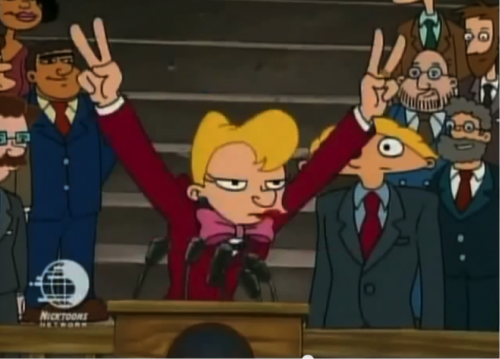
Helga had insecurities and anger issues due to her family life. Her dad, Bob was a self-absorbed blowhard who measured a person’s worth by accomplishments. Her mom, Miriam, was a dissatisfied and absentminded housewife. Her sister, Olga, was an overachiever who her parents constantly lavished with praise and attention. Helga was neglected by her family–a fact emphasized by her father’s continual habit of calling her by the wrong name. The episode “Helga on the Couch” revealed that when she and Arnold were toddlers, he was the first to give her positive attention. Because of her extreme loneliness, she responded to Arnold’s kindness with great intensity. The episode gave further insight into why Helga had what’s often viewed as the “masculine” problem of repressing her sensitive side due to the typical “male” fear of being ridiculed and seen as weak.
Despite having qualities associated with boys, Helga wasn’t immune to the pitfalls of being a girl in a patriarchal society. A lot of episodes revolved around her doing stupid things for a guy or being tempted to be more lady-like to please someone. She went above and beyond doing foolish things over Arnold whether it was sabotaging his date with a girl he liked named Lila in “Love and Cheese” or pretending to be very sophisticated in “Dinner for Four” or pretending to be Arnold’s French pen pal in “Arnold’s Valentine.” A lot of things that Helga did for Arnold’s attention were over-the-top for comedic effect. But an episode called “Helga’s Masquerade” was painfully realistic. In the episode, Helga mimicked Lila in fashion and behavior, hoping that Arnold’s affection for Lila would transfer to her.
After she basically turned herself into a carbon copy of Lila, Arnold started giving her the attention she desired. However, she became unsatisfied having changed herself to please him. By the end, she returned to being herself. Another episode that was very informative for young girls was “Helga’s Makeover”; Helga was left out of a sleepover party because she wasn’t girly enough. She conforms despite her best friend, Phoebe, telling her to be true to herself. Once she’s welcomed by the girls, she changes her mind. Its overall lesson was that there’s more than one way to be a girl.

I was a kid when I first saw these episodes, unaware of how closely Helga’s growing pains would mirror my life in terms of making a guy’s opinion of me way too important or struggling/clashing with expectations of what a girl is “supposed” to be.
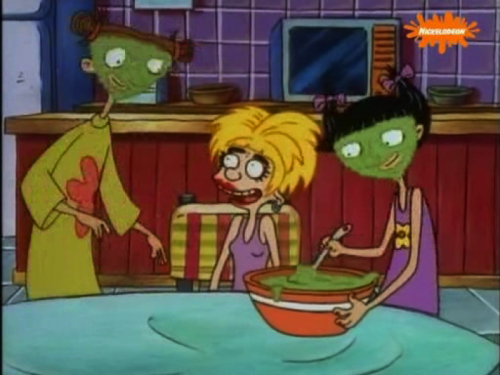
Arnold had personal struggles that also served as inspiration for young viewers. Arnold lived in a boardinghouse that his grandparents owned. He was usually the voice of reason but he sometimes made mistakes. In the episode, “Mugged,” he dealt with being mugged in the wrong way. He had to learn more than once to appreciate his nontraditional family. But overall, he was the embodiment of altruism and a great role model for kids. His tendency to go the extra mile in assisting people caused Gerald to frequently say to him, “You’re a bold kid, Arnold.” His selfless nature was unusual for a kid his age and it made him a target for bullies. Still, he was never self-conscious about being singled out nor was he insecure about his head’s football shape despite how much Helga teased him about it. This clued in the child audience member that it was okay to have physical features that differ from what is considered “normal.”
Just like city life, HA! exposed children to a lot of culture. It had episodes that lovingly and creatively gave its own twist on classic operas and plays. Cartoonish sound effects were balanced out with smooth jazz, making for an eclectic musical score that reflected the essence of the show. Additionally, the introduction of country music in episode “Mr. Hyunh Goes Country,” alongside other episodes that involved a Frank Sinatra-like character named Dino Spumoni, helped kids to develop an early appreciation of music. The refreshingly non-stereotypical Jewish character, Harold was probably the first introduction a lot of kids had to Yiddish words. The show normalized interracial couples; Helga’s best friend, Phoebe, was uneventfully shown to be the product of a white mother and Asian father. Also, she and Gerald–an African American–had brief moments of innocent flirtation throughout the series.

Most bully characters in cartoons are mean just for the sake of being mean. It makes them easy to dislike and dismiss as “bad.” Hey Arnold! didn’t make things easy. Characters that seemed scary were shown to be harmless up close. Harold had an imposing presence and boisterous voice. But his bark was always proven to be bigger than his bite because whenever someone stood up to him, he would cower and sometimes literally cry for his mommy. Helga thought Big Patty was dumb and mean but with Arnold’s help, she discovered Patty was actually reasonable, nice, and perceptive. Helga would be mean to Arnold in public but then hide to secretly profess her love for him and/or express her regret for hurting him. Oftentimes, characters that I thought I was supposed to despise would turn out to have a softer side. As a result, I would feel conflicted and eventually submit to having compassion for them.
The reason why seemingly despicable characters would inspire sympathy is because the show swayed the viewer to see the people from Arnold’s nonjudgmental perspective. There would be episodes that provided explanations, not excuses, for why a bully was mean in order to make children as understanding as Arnold. Helga was not an easy character to pin down and therefore, she challenged young viewers to see the areas of gray. Normally in fiction, a female school bully is reduced to being the catty pretty girl. But Helga’s power didn’t come from being pretty; it came from instilling fear into people with the threat of violence–an attribute that’s traditionally given to a male bully. What kept you from fully hating her is there being episodes that revolved around Helga’s home life that made you feel sorry for her and understand her better.
Hey Arnold! taught life lessons without the viewer realizing it. An episode called “Stoop Kid” taught kids about the benefits of getting out of their comfort zone. The episode “Chocolate Boy” humorously analogized drug addiction. Arnold’s closeness with Gerald alongside Helga’s rapport with Phoebe highlighted the importance of friendship. The wrongness of first impressions was a reoccurring lesson; a dumb character would have moments of wisdom or a snobby character would have moments of vulnerability or a seemingly lucky rich kid would be shown as unhappy and/or overstressed. My favorite example of this message is in the episode “Ms. Perfect,” which introduced the character of Lila. Her popularity caused female students to envy her at first. But once they learned about Lila’s troubled life, the girls apologized and accepted her.
The show also deconstructed the traditional definition of a happy and healthy family. Helga technically had a nuclear family yet they were dysfunctional. Arnold didn’t have a typical nuclear family yet he was emotionally healthy and stable. His parents died when he was young which was explained in the episode “Parents’ Day.” The show never glossed over the pain of losing a love one. There were scenes that showed his sadness and his longing to know more about his parents. The importance of an extended family and surrogate family was highlighted throughout the show; his kooky grandparents were his guardians and the offbeat boarders acted as surrogate relatives. Though the boarders had their funny quirks and various accents, it never went into the territory of caricature. Whatever flaw any character had was attributed to their individual personality, not their race or culture or gender.
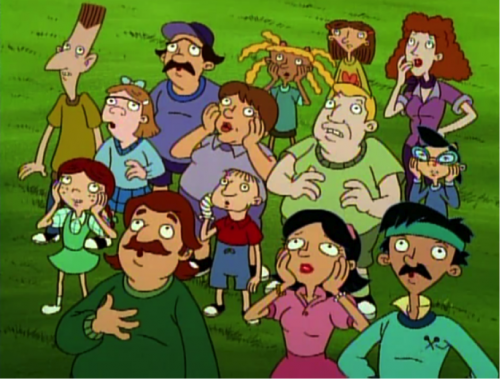
I applaud the show for never babying its audience. It had numerous Halloween episodes that I fondly remember being genuinely creepy. One of the most touching examples of its creative risk-taking is the episode “Arnold’s Christmas,” which revolved around Vietnamese tenant, Mr. Hyunh. He had to separate from his daughter during the Vietnam War to give her a better life. It’s still rare for me to see a show or movie that sympathizes with what ordinary Vietnamese people went through during the Vietnam War. Another episode that had the subject of war was “Veteran’s Day,” in which Grandpa reminisces about his experiences as a World War II veteran. But not all of Hey Arnold! episodes were profound; serious episodes would be balanced with lighthearted episodes like “Beaned,” “April Fool’s Day,” or “Stuck In A Tree,” as to not overburden the viewer.
Hey Arnold! was a show that celebrated diversity and encouraged children to do the same. Like Gargoyles or Batman: The Animated Series, it redefined what a cartoon could be by taking big chances. I’m still awed by the character development, witty dialogue and complicated subject matter it had. Just like Animaniacs, it’s a cartoon show that people can watch again as adults in order to understand the occasional subtle adult humor they overlooked as children. It had great representation when it came to race, gender, class and culture. It was one of the few shows that revealed the positive sides of living in the city, including the richness of knowing people from all walks of life. With humor and sensitivity, it challenged me intellectually and it instilled me with lessons that would be valuable in childhood and beyond.
Nia McRae graduated summa cum laude from Medgar Evers College where she earned a Bachelor of Arts degree in Liberal Studies with a concentration in history. She has a strong passion for critiquing racial and gender politics in the media and putting it in historical context.
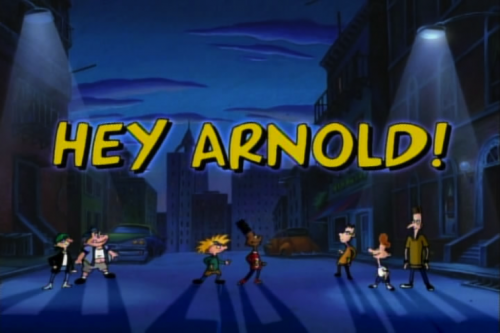
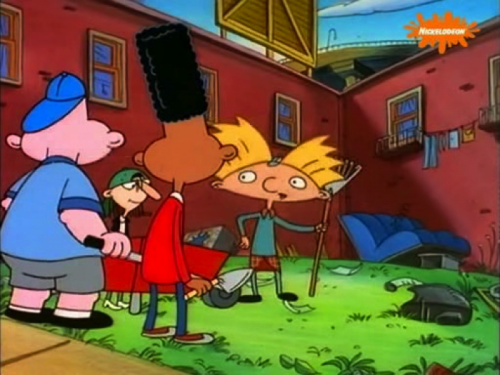
1 thought on “‘Hey Arnold!’: A Bold Children’s Show”
Comments are closed.